Preparing your yard for the winter is essential for promoting growth next spring. Now is the time to put the gardens to bed, tuck away your tools, and embrace the change of seasons.
In this article, we’ll discuss 15 critical October yard care tips to prepare your yard and garden for winter and why they’re important.
Let’s dig in!
1. Start Winterizing Your Gardens
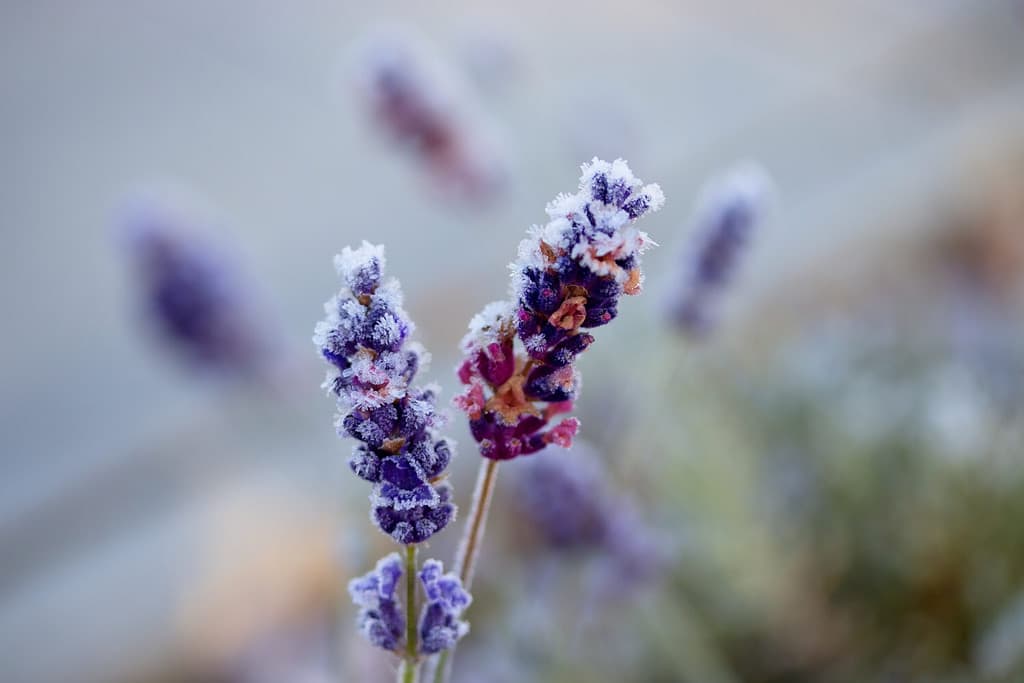
Winterize your gardens after the first frost of the season.
©islavicek/Shutterstock.com
Depending on your area, you could experience the first frost of the season before the end of October.
If you live in a cold climate, start winterizing your gardens in October. This could include:
- Pruning
- Removing debris and wilted plants
- Fertilizing the soil
- Mulching
It’s important to do your research and specify your approach based on the unique needs of your plants. For example, if you have roses, it’s important to wait until after the first frost to prune them. If you have lavender, adding a layer of mulch will help protect the roots.
If you don’t live in a cooler climate, use this time to map out a plan for winterizing your gardens and collect the supplies you need.
2. Aerate the Lawn
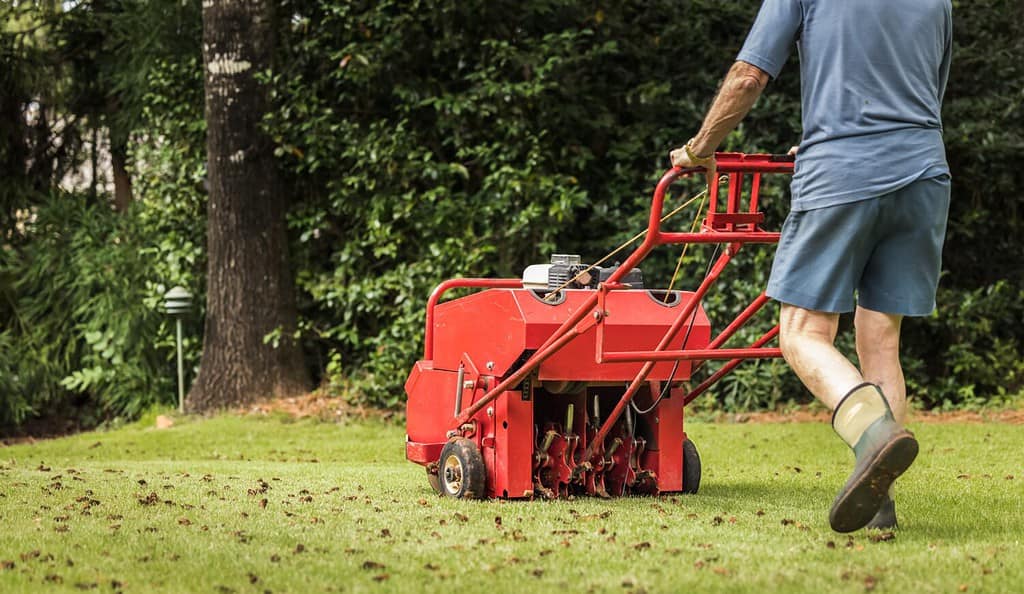
Aerate in the fall if you have cool-season grass. Wait until spring if you have warm-season grass.
©The Toidi/Shutterstock.com
If you live in a colder climate, one of your can’t-miss October yard care tasks is aerating the lawn. This timing is perfect for avoiding the growing season while still allowing cool-season grass to recover before dormancy. Aerating in the fall will also help promote drainage during the spring.
Aerate your lawn every year if you have growing issues or clay-rich soil. If you have loose or sandy soil, you can do this October yard care task every 2-3 years.
3. Dethatch the Lawn
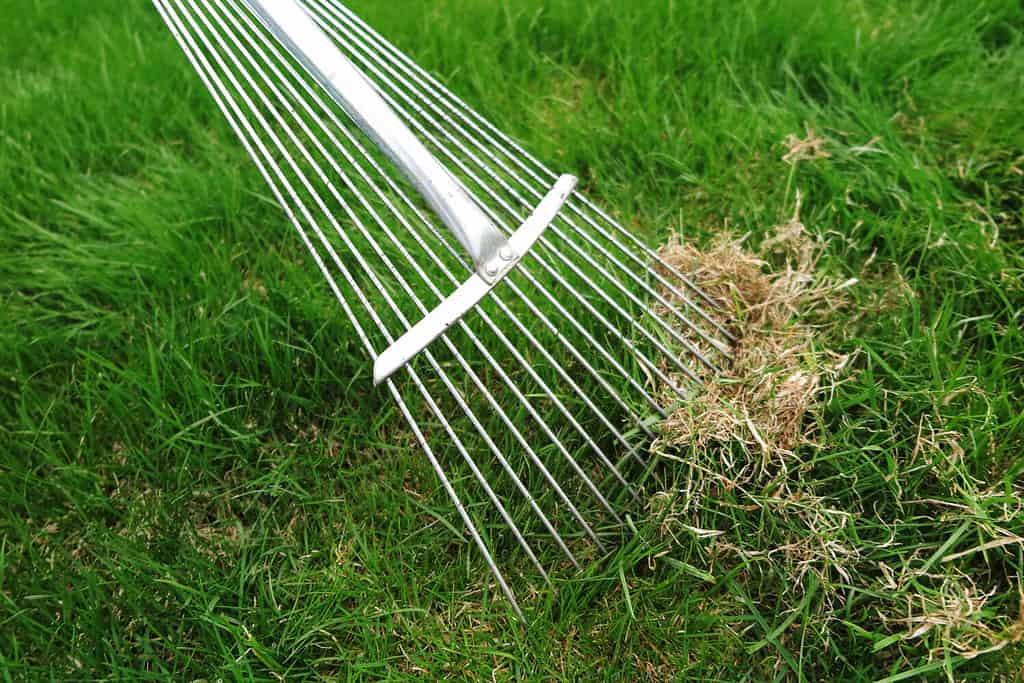
Dethatch the lawn every 1-3 years.
©photowind/Shutterstock.com
This October yard care chore isn’t necessary every year, only when you have increasing layers of dead grass and debris. Dethatching too often could harm your lawn.
Dig out a piece of your lawn and measure the dead, thatchy layer. If the thatch is over a 1/2 inch thick, it’s time to add this chore to your list.
Mow your lawn, then use a dethatching rake or a vertical cutter to dig in and churn the layer of thatch. This will leave your lawn looking pretty beat up. However, it will have plenty of time to rest and recover over the winter.
Use a normal rake to get rid of the churned thatch and dispose of it in the compost. Be sure to mark any sprinklers, utility lines, or valves before you use a dethatching machine. Wait to fertilize until after you’ve dethatched.
4. Mow the Lawn for the Season

Stop mowing the lawn once the temperature drops to 50°F (10°C).
©africa_pink/Shutterstock.com
If you grew up with the advice to mow the lawn as short as possible, you’re not alone. However, lawn care experts now advise mowing it to 2-3 inches during the fall to protect the roots and provide ample insulation.
Plan your last mow of the year for when the temperature dips below 50°F (10°C). If you live in a warmer area and have warm-season grass, stop cutting after the temperature dips under 60°F (15°C).
Leave your grass clippings on the lawn for a healthy source of nutrients over the winter months.
5. Seed Bare Patches
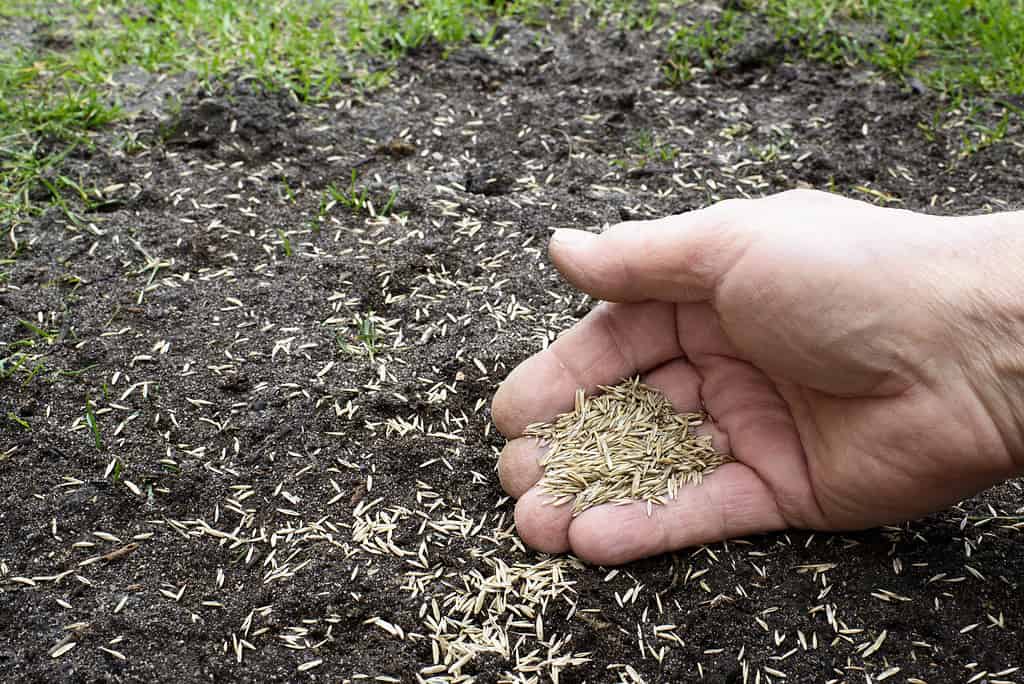
Spread grass seed in October if you live in a cool climate.
©iStock.com/
An often-overlooked October lawn care chore is seeding the grass. During the fall, the days are warm, and the evenings are cool, providing the perfect environment for grass to get established before the winter.
Add a layer of leaves or straw over the patches to protect the seeds from curious birds preparing for winter.
6. Mulch or Move Your Leaves
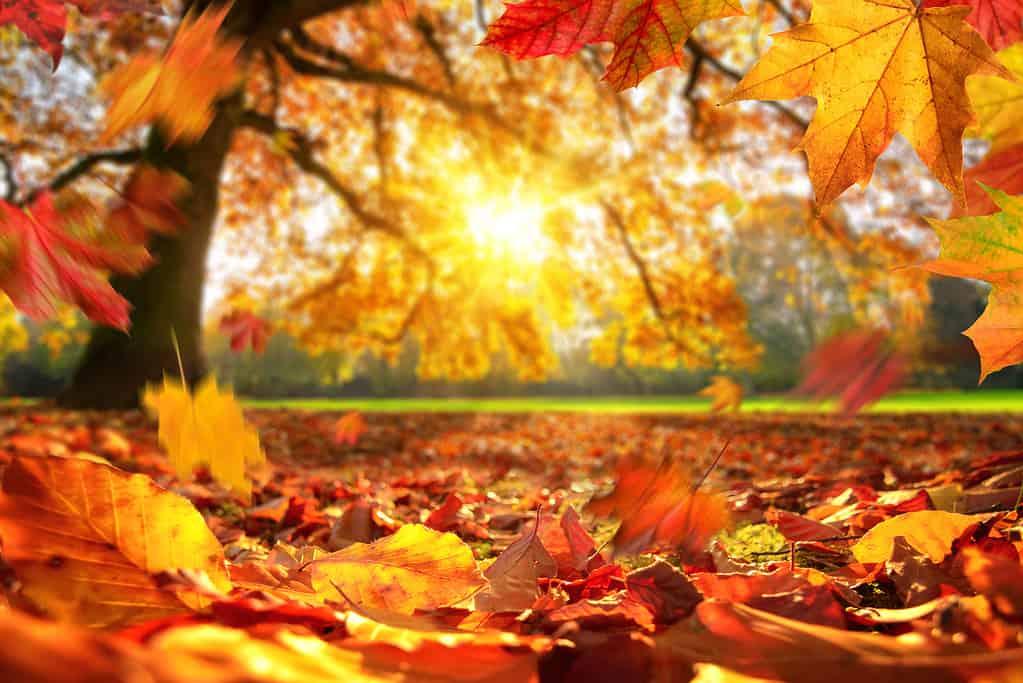
Mulch your leaves or move them to a compost pile.
©Smileus/ via Getty Images
Dealing with falling leaves is another controversial subject in the world of lawn care. Removing leaves and disposing of them in landfills interrupts the natural process and contributes to a larger environmental issue. However, leaving them on the lawn could suffocate the grass underneath.
The solution is to either mulch your leaves and leave them on the lawn or rake them into a compost pile. Leaves also make a great insulation layer in gardens and around wrapped rose bushes during the winter.
If you use leaves as mulch, remember to remove them in the early spring to let the plants breathe and to reduce the chances of attracting pests.
7. Plant Your Fall Crops
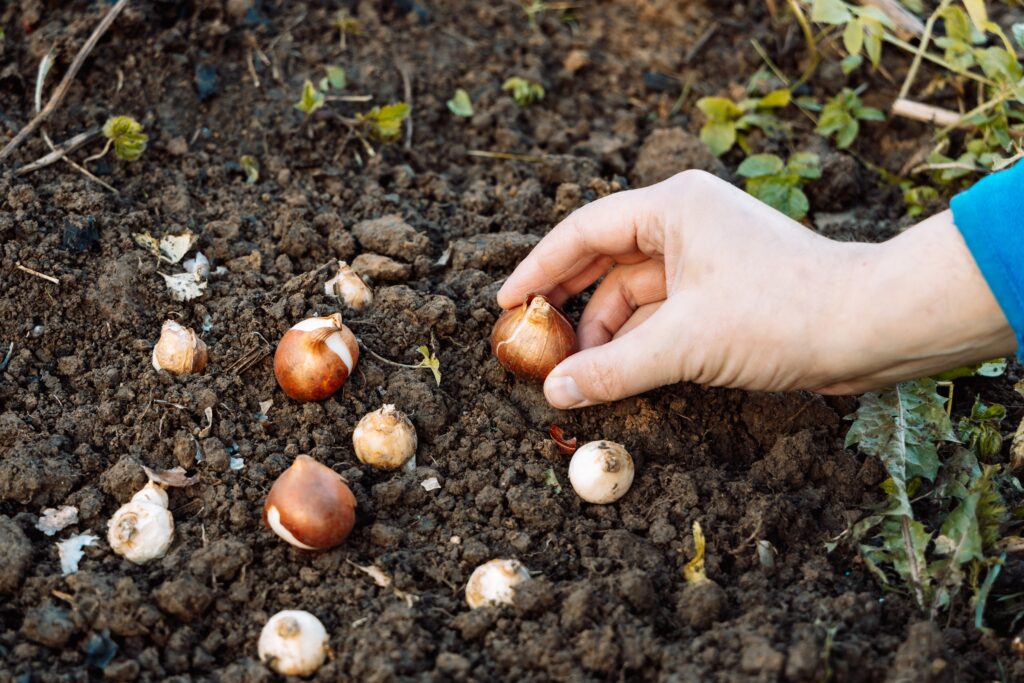
Plant tulip bulbs in the fall to help them vernalize over the winter.
©S.O.E/Shutterstock.com
Don’t forget to plant your fall gardens in October! Crops like garlic thrive when planted before the ground freezes, and flowers like tulips need the cold to bloom in the spring.
Be sure to check your USDA zone before planting to ensure you have the right timeline and plant species for your region. For example, some species of lavender perform well in cold areas and will survive fall planting. Others can’t withstand any cold and will die quickly.
8. Winterize Your Irrigation System

Don’t forget to remove or insulate your sprinklers.
©iStock.com/
If you have a lawn irrigation system, it’s important to winterize it and adjust it for the colder months.
Shut down the system, turn off any automated triggers you have set up, and drain the leftover water. Depending on how cold it gets in your area, you may choose to insulate the system for the winter. Insulate backflow preventers and above-ground valves, but never block drains or vents.
If you live in a warmer area and use your irrigation system during the winter, adjust the flow to reflect the coming dormancy period.
9. Clean and Store Your Equipment
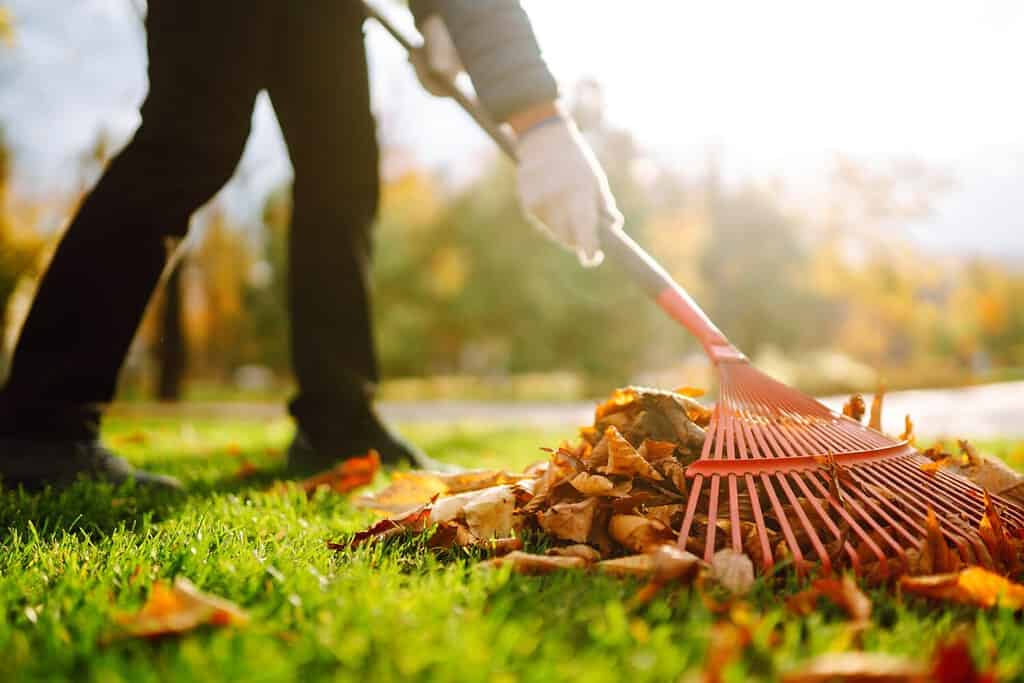
Cleaning your lawn care tools helps maintain them and improve their lifespan.
©maxbelchenko/Shutterstock.com
Take the time to clean your summer and fall lawn care tools before putting them away. Wash starter pots and trays with soap and water. Wipe down your shovels, trowels, and rakes with disinfectant and scrub to remove rust as needed.
The better you care for your tools now, the longer they’ll last!
10. Test Your Winter Equipment
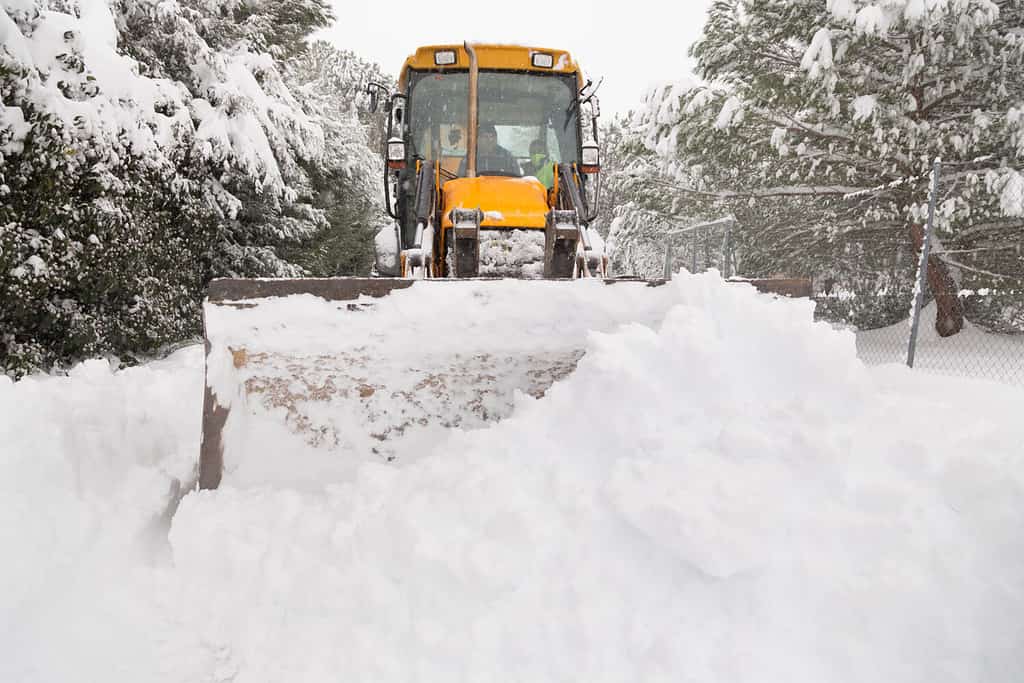
Make sure your winter gear is stocked up and ready before the snow comes.
©Juan Carlos L. Ruiz/Shutterstock.com
Take some time to get out your winter gear and ensure everything works. You don’t want to discover that your snowblower isn’t working during the first big snowstorm!
Make a list of winter supplies you’ll need and start acquiring them now before the demand increases. Things like deicer, salt, or sand should be replenished. Confirm that you have a spare jug of gas to fuel your equipment or generators should the power go out.
11. Clean the Gutters
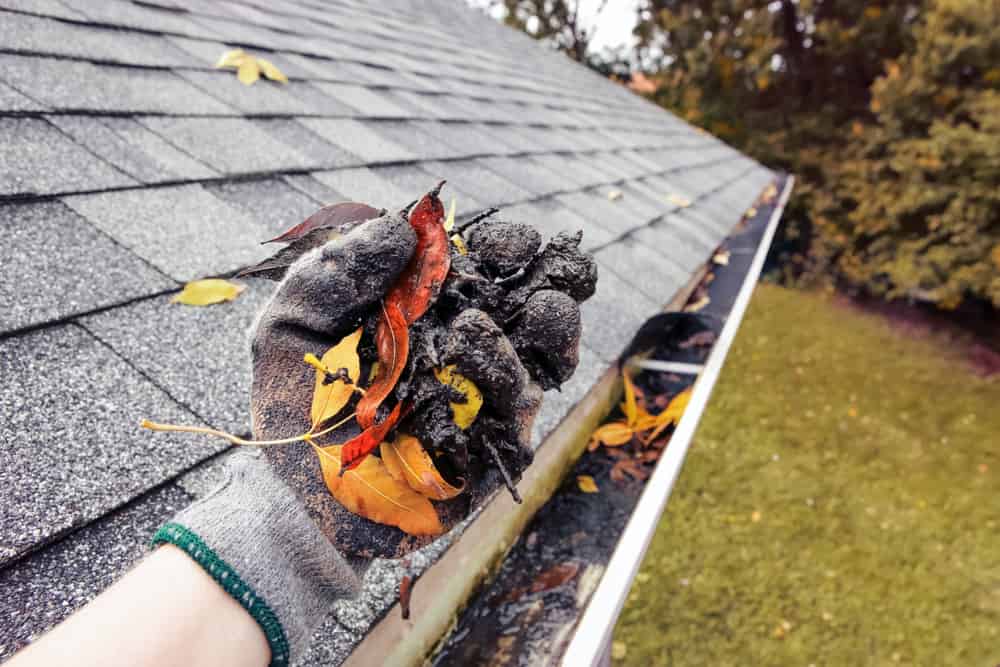
Cleaning leaves from the gutter is an essential October yard care task.
©Suzanne Tucker/Shutterstock.com
Gutter care falls under the umbrella of both house and yard maintenance. However, it’s important to remember this task in the fall when the leaves and storm debris may block up your system. This could lead to flooding and risk the structural integrity of your roof when winter arrives.
Ensure the downspouts are clear and moving away from the house. If you have a rainwater harvesting system or barrel, put it away for the season.
12. Remove Weeds and Pests

Remove any remaining weeds from your yard.
©iStock.com/Yesim Sahin
Take some time for some last-minute weed removal to set your lawn up for success in the spring. Assess your lawn and highlight any potential pest invasions that should be dealt with before the winter.
13. Fertilize the Lawn
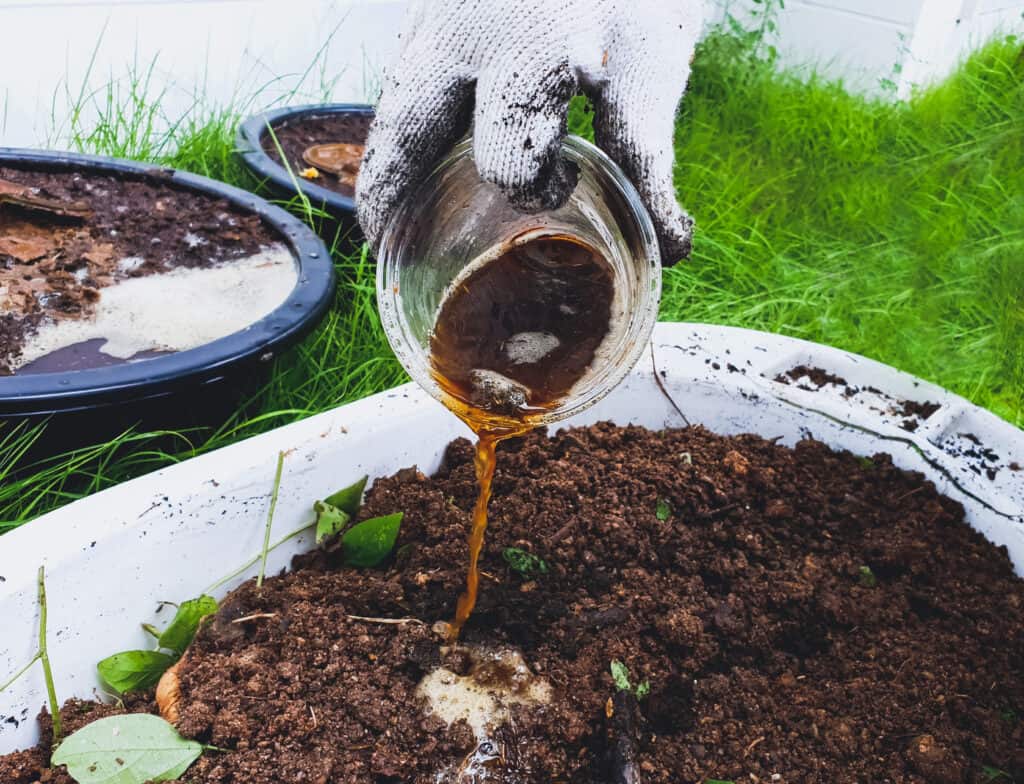
Provide nutrients with fertilizer.
©The little paint/Shutterstock.com
Adding some fertilizer to your lawn (after the weeds are removed) can help feed your grass during the winter and improve its thickness and growth in the spring.
Consider testing your soil to see what it needs the most. Otherwise, adding some compost or manure will be a welcome source of nutrients.
14. Edge Gardens and Walkways

Clean up the edges around your walkways and gardens.
©PreechaB/Shutterstock.com
Edging gardens and walkways is another October yard care task that’s often overlooked. October is the perfect time for this task, as the natural growth has died back, and the ground is not yet frozen.
Use a spade or edger to cut back the soil in an even border, and trim any overhanging grass with clippers. Edging walkways can help prevent heaving or lawn damage during vigorous snow removal efforts.
15. Monitor and Maintain

Monitor your yard for issues.
©SingjaiStocker/Shutterstock.com
The work doesn’t necessarily end here. An unexpected warm front or early storm could impact your yard and undo some of your hard work.
Keep checking on your lawn and gardens for pests and problems, and stay on top of your efforts until the winter sets in.
| Ranking | October Yard Care Task |
|---|---|
| 1 | Start Winterizing Your Gardens |
| 2 | Aerate the Lawn |
| 3 | Dethatch the Lawn |
| 4 | Mow the Lawn for the Season |
| 5 | Seed Bare Patches |
| 6 | Mulch or Move Your Leaves |
| 7 | Plant Your Fall Crops |
| 8 | Winterize Your Irrigation System |
| 9 | Clean and Store Your Equipment |
| 10 | Test Your Winter Equipment |
| 11 | Clean the Gutters |
| 12 | Remove Weeds and Pests |
| 13 | Fertilize the Lawn |
| 14 | Edge Gardens and Walkways |
| 15 | Monitor and Maintain |
The photo featured at the top of this post is © encierro/Shutterstock.com
Thank you for reading! Have some feedback for us? Contact the AZ Animals editorial team.






